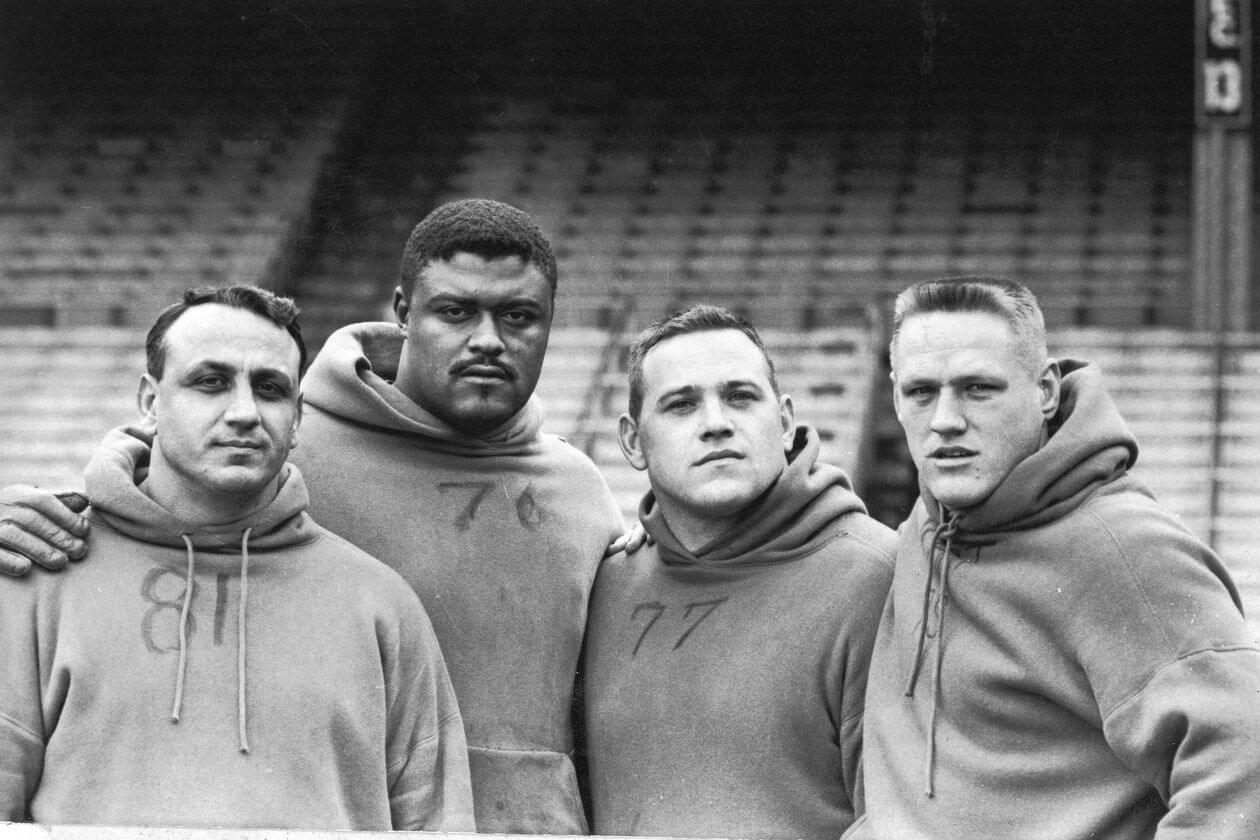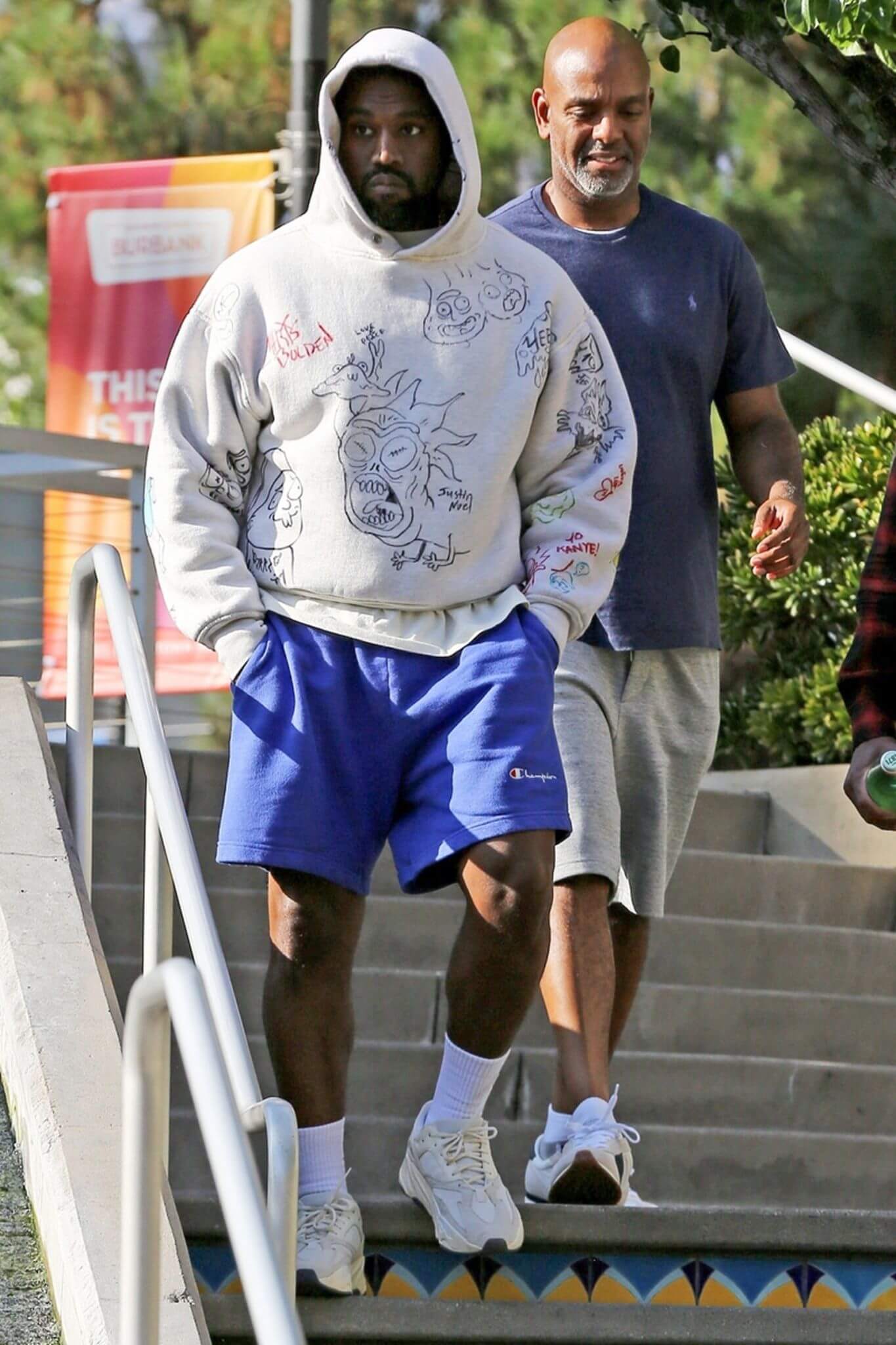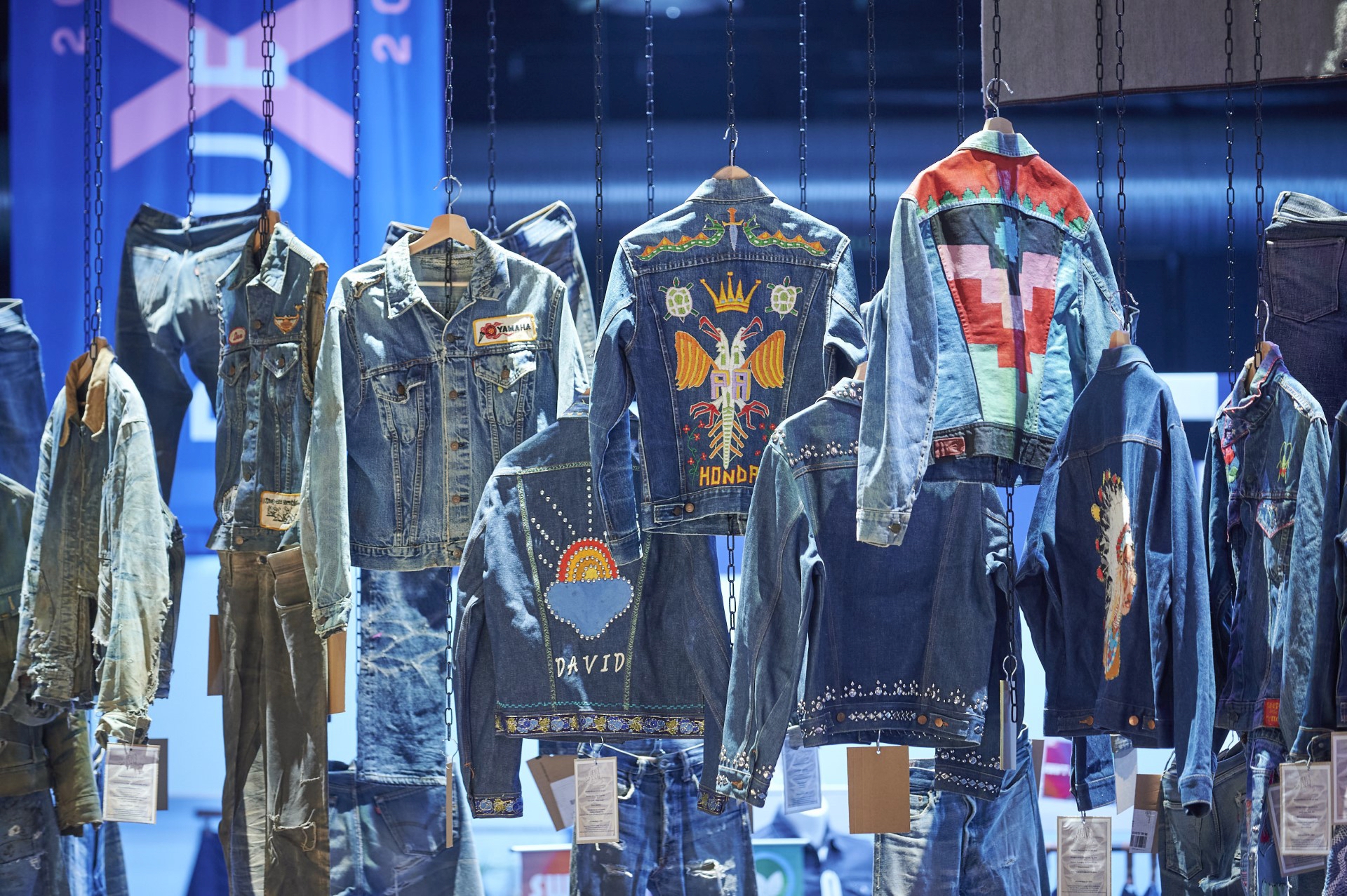The History of the ‘Hoodie’ with Admiral Sporting Goods Co.
By @rugged_style
The hooded sweatshirt – or hoodie as it’s become known – might not immediately strike you as a ‘classic’ fashion item, but when you give it further thought, it ticks all the boxes; historical lineage, interpreted by brands from streetwear to high street and beyond, widespread appeal, versatility, links with counter culture movements, the list goes on. Alongside a pair or jeans or the humble t-shirt, the hoodie is as universal as it gets. It’s comfortable, functional, can be dressed up or dressed down and most of us own one (or a dozen).

A perfectly distressed vintage US college fraternity sweatshirt with cut off sleeves (image via Unsound Rags)
The Birth of an Icon
But what was the origin of the garment that we all know and love? Well, the hoodie has it contemporary beginnings in the good ole’ US of A. Many sources cite that the garment was developed for workers in freezing cold New York warehouses and that the Knickerbocker Knitting Company (later to become Champion) were the first to commercially manufacture the hoodie. During the 1920s and 30s the garment offered additional protection from the elements and more warmth than the conventional long underwear worn by factory workers in frigid temperatures.
However, the first iterations of this statement garment were not the same as they are today. Hoods were originally added to sweatshirts, before being manufactured as a standalone item on the production line. In true DIY fashion, companies took existing crew neck sweatshirts and had a hood sewn around the neckline, creating what vintage collectors now refer to as an ‘after hood’. With a kangaroo pocket added to the front in order to act as a hand warmer, the hoodie was born.
 A vintage 1940’s ‘After Hood’ (image via Acorn Vtg Japan)
A vintage 1940’s ‘After Hood’ (image via Acorn Vtg Japan)
Following this, the hoodie rose in popularity as a practical and functional garment on the athletics field. Equally popular amongst the military as a training garment, the hoodie offered comfort, warmth and maneuverability for all manner of activities from the running track to the basketball court. During the 1950s and 60s the hoodie remained a popular piece of sportswear and was largely resigned to the gyms, college campuses and athletic fields of the US. It wasn’t until the 1970s that the hoodie gained more traction as a casual ‘everyday’ garment and its beginnings in streetwear were unearthed.
 Members of the New York Giants modeling hoodies with hand written numbers during training (image via WSJ).
Members of the New York Giants modeling hoodies with hand written numbers during training (image via WSJ).
Rocked by Rocky
There were two pivotal moments which caused the hoodie to rise in popularity and transition from the sports stadium to the street. The first was Philly’s favourite hero; Rocky Balboa. Played by Hollywood star Sylvester Stallone, the movie tells the story of Rocky’s rise to fame and path to the world heavyweight championship. In its 1976 debut, Rocky trains in a now iconic outfit comprised of a knitted black ‘watch cap’, grey cotton hoodie, track pants and Converse Chuck Taylor high tops. While this still channels the hoodies origins in athletic wear, it coincided with another key moment in cultural history which fast tracked the hoodie’s rise to stardom.
![]()
Sylvester Stallone as Rocky Balboa wearing an iconic grey hoodie on the steps of the Philadelphia Museum of Art (image via Costume Wall )
A Counter Culture Classic
In the 1970’s a new breed of music was born on the city streets of America; Hip Hop. On the streets of the Bronx, an area which was economically deprived and home to a large African American, Caribbean American and Latin American population, this new genre was defined. Taking the world by storm, the hoodie became a key part of the Hip Hop uniform. From Afrika Bambatta and Grandmaster Flash to RUN DMC and Wu-Tang, the tough and rugged working class heritage of the hoodie leant itself to this new form of cultural expression. While Hip Hop’s origins on the East Coast didn’t stay isolated for long and took the country (and later the world) by storm, there was also another youth led movement picking up momentum on the West Coast.

Wu Tang Clan’s debut album ‘Enter The Wu Tang (36 Chambers)’ sees the group clad in black hoodies on its cover (image via Discogs)
Although skateboarding’s inception lies in the drained pools of Southern California, it didn’t take long for the momentum of this four wheeled frenzy to take root in every town across America. Trespassing was almost a pre-requisite in the beginnings of skateboarding, with teens jumping fences into backyard pools of the LA area. As the sport became more popular during the 80s, skaters skated wherever and whenever they could; abandoned warehouses, vacant parking lots or anywhere with a ledge or stair set to trick on. Without the beaming heat of SoCal, skaters needed protection from the elements and a baggy cotton hoodie fit the bill perfectly. Lending itself to loose and baggy fits, skateboarding (much like Hip Hop) enabled a generation to define themselves through their clothing and anti-establishment attitude. Fashion was central to this ethos and the hoodie was an integral part of skating’s make-up. Leading to the loose ‘anti-fit’ styles of the 90’s, Hip Hop and Skateboarding set the stage for what was to come.
 The hoodie has long been a permanent fixtures in skateboarding fashions (image via Monster Children)
The hoodie has long been a permanent fixtures in skateboarding fashions (image via Monster Children)
Another element of emerging counter culture who favored the hoodie was graffiti artists. With the hood providing a much needed disguise and anonymity for this fringe activity, artists who made their mark on NYC train cars and street walls favored the garment the same way as skaters and hip hop MCs. It’s also worth noting that the reputation of the hoodie wasn’t alway clean – the term ‘hoodies’ in the UK often refers to groups of disobedient youths involved with low level crime and the infamous ‘Unabomber’ composite sketch showed the suspect with a hoodie and sun glasses in an effort to reveal his identity. But regardless of these negative connotations, the hoodie continues to be one of the most widespread wardrobe staples of the Twenty First century and although the term itself was on coined in the 1990’s, it’s firmly placed within fashion vocabulary.
 Graffiti writers also favoured the hoodie for its inconspicuous appearance (image via Pinterest original source unknown)
Graffiti writers also favoured the hoodie for its inconspicuous appearance (image via Pinterest original source unknown)
A Modern Wardrobe Staple
Continuing to be worn by Athletes, college kids and cultural pioneers, the garment has become a mainstay of the modern wardrobe. It is a casual classic and a cultural icon. Often seen on the likes of ‘Ye, Rihanna or Travis Scott, it has retained its status in Hip Hop culture, but it’s just as comfortable on the catwalks of Paris or in the windows of a Louis Vuitton storefront. It even became the #ootd of Facebook’s Mark Zuckerberg who saw its simplicity as a way for him to focus his efforts on more important things (other than his ‘fits). Sure, the hoodie is undoubtedly mainstream in 2020, but it still has street currency as Denis Wilson of Rolling Stone states; “mainstream fashion may embrace it as practical article of clothing, but it’s never lost that edge”. Universal and ubiqitous, the hoodie has come far from its humble beginnings to cement its place in every aspect of the fashion world.
 Kanye West in a customized Rick and Morty hoodie (image via Highsnobiety)
Kanye West in a customized Rick and Morty hoodie (image via Highsnobiety)
Admiral’s Interpretation
While much of the above focuses on the origins of the hoodie in the USA, there were also significant sportswear developments on the other side of the Atlantic. Sporting outfitters Admiral were founded in Leicester, England, in 1903 and started out manufacturing woolen underwear. Fast forward to the First World War and Admiral were outfitting the British Navy with sports and exercise clothing (which led to the brand adopting the name ‘Admiral’ as a reference to the highest rank in the Royal Navy).
 Two sailors practice their punches wearing Admiral sportswear (image via Admiral)
Two sailors practice their punches wearing Admiral sportswear (image via Admiral)
The brand continued to outfit the military as well as the British public due to a rise in recreation activities throughout the inter-war years. During the Second World War, Admiral even provided high quality clothing for both British and US armed forces. However, in the 1950s Admiral began to perfect the creation of interlock sweatshirts and decided to shift their focus away from under garments to the more traditional sportswear that we recognize today. Going on to outfit high schools and World Cup footballers alike, Admiral had firmly found its place in manufacturing high quality sportswear which would stand up to the rigors of physical activity and stay up-to-date with the latest advances in manufacturing.

The Braunstone Hoodie in Condor Grey Marl by Admiral Sporting Goods Co. (image via Admiral Sporting Goods Co.)
Taking inspiration from this heritage, Admiral Sporting Goods Co. have developed the Braunstone Hoodie which is inspired by the historical reference points of Twentieth Century sportswear and a desire to continue to manufacture high quality clothing. A contemporary classic, the Braunstone hoodie looks like it belongs on a college campus of the 1960s or on the streets of Harlem in the 1990s. Made in Portugal from a heavyweight 395gsm cotton, it is yarn dyed and pre-shrunk for a perfect fit. Featuring a ribbed V-notch insert, dipped end drawcords and a lined hood, the devil is in the detail. Available in Condor Grey Marl, Harrier Green and Hawk Navy, the Braunstone looks just like that perfectly faded vintage hoodie you’ve seen in a Japanese menswear magazine. Admiral Sporting Goods Co. not only have over a hundred years of manufacturing history to draw upon, but a deep understanding for the lineage of modern menswear. You can shop the Braunstone sweatshirt here and keep an eye on their Instagram for all the latest offerings from the brand.
 Share
Share
 Tweet
Tweet



